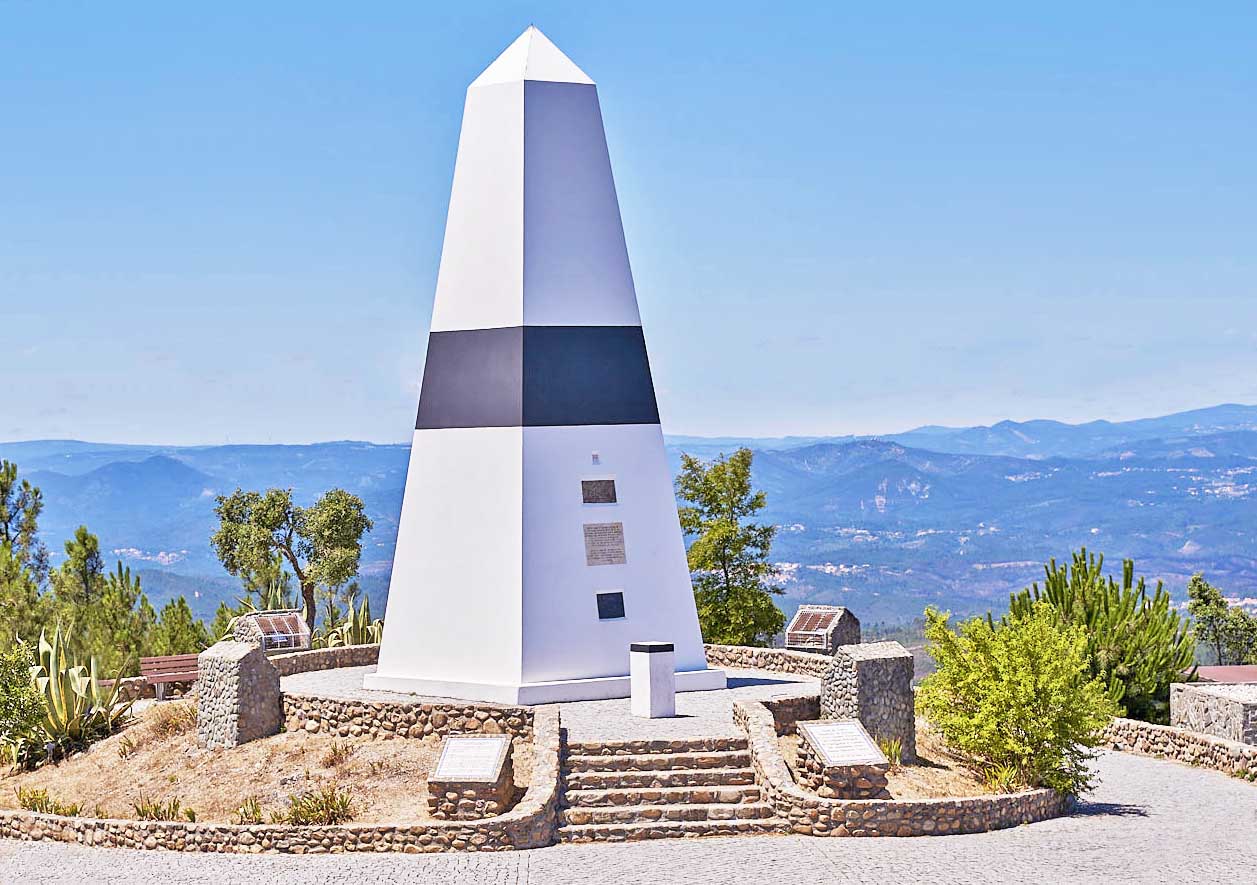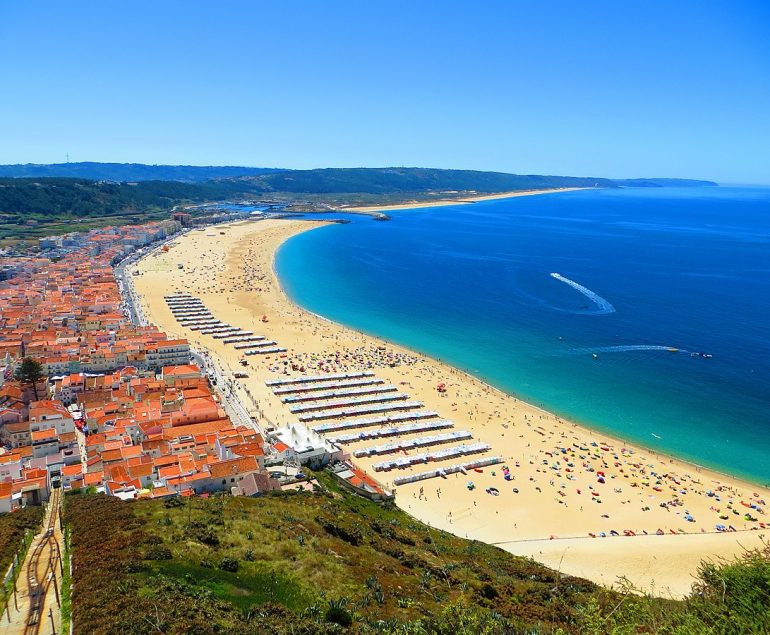
The morning we arrived in Amarante, the river was still half-asleep. Mist clung to the water like gauze, softening the edges of the stone arches that carry the Ponte de São Gonçalo across the Tâmega. Swallows dipped low, slicing through the haze, and the bells of the church began to toll — slow, sonorous, and heavy with centuries. A woman arranging oranges at the riverside market glanced up and said to no one in particular, “In Amarante, the river doesn’t just run through town. It carries our memory.”
That stayed with us, because here’s the thing: Amarante isn’t just another postcard-pretty town in northern Portugal. It’s a place where legend and landscape merge, where history lingers in stone, and where sweetness — literal sweetness — is a way of life.
The Bridge That Saved a Town
We walked first to the Ponte de São Gonçalo, the 18th-century stone bridge that arcs elegantly over the river. It’s impossible to stand there and not feel the weight of its story. In 1809, during the Peninsular War, Napoleon’s troops tried to storm across this very span. For three weeks, the people of Amarante held them back. They were farmers, priests, and townsfolk, but together they resisted one of Europe’s greatest armies.
Leaning over the parapet into the river, we imagined the chaos — musket fire, smoke, and men defending not just their bridge but their identity. Today, couples stroll hand in hand where soldiers once crouched. Children lean over the edge, tossing crumbs to ducks. Time has gentled the bridge, but its stones remember.
As one local historian told us over coffee, “The bridge is our spine. Without it, there would be no Amarante.”
Saint Gonçalo: Matchmaker, Miracle Worker, Memory Keeper
Everywhere we went, one name kept surfacing: São Gonçalo. He was a Dominican friar in the 13th century, born in the Minho region but drawn to Amarante, where he lived as a hermit by the river. Pilgrims came for his counsel, miracles were attributed to him, and when he died, devotion followed.
In the Church of São Gonçalo, built beside the river, his tomb glows in golden light. We stepped inside and watched as women touched the stone, lips moving in prayer. Many come here to ask for love. Tradition has it that São Gonçalo helps women find husbands, though the petitions have broadened over time to include blessings for marriages, families, and futures.
Outside, vendors sell cakes in shapes that are less saintly and more suggestive — fertility symbols tied to ancient rituals, now part of the festival that bears his name. A baker laughed when we asked about them. “Faith and fun go together in Amarante,” she said, sliding a tray of sugar-glazed pastries into the oven.
Baroque Beauty and Modern Vision
The church itself is a masterpiece of Portuguese Baroque: gilded altars that shimmer like treasure, saints frozen mid-sermon, and ceiling frescos swirling with angels. Yet Amarante isn’t frozen in time. Just a short walk away, we found the Amadeo de Souza-Cardoso Museum.
Amadeo, born in Amarante in 1887, was one of Portugal’s modernists, a contemporary of Picasso and Modigliani. His work bursts with energy — bold colors, fractured forms, and a dialogue between Portugal and Paris. The museum, housed in the old Dominican convent, juxtaposes modern art with medieval stone. Standing there, surrounded by Amadeo’s canvases, we thought, “This town isn’t afraid of contrasts. It wears its history in one hand and its imagination in the other.”
Sweetness as Heritage
You cannot discuss Amarante without mentioning its sweets. The town is famous for its conventual pastries, recipes born in monasteries centuries ago, when nuns perfected the alchemy of sugar and egg yolks. Names like papos de anjo (angel’s double chins) and brisas do Tâmega (Tâmega breezes) suggest that these are not ordinary desserts.
We tried papos de anjo in a riverside café. Golden, syrup-soaked, impossibly rich. The first bite was indulgence; the second was inheritance. A waiter polishing glasses nearby leaned in and said, “In Amarante, dessert is memory. Our grandmothers teach us as carefully as prayers.”
Pair it with a glass of vinho verde from the surrounding Minho vineyards, or a Douro red if you want something deeper, and you taste the landscape itself.
Festivals: Where Sacred Meets Joyful
In June, Amarante erupts in celebration for the Festival of São Gonçalo. We weren’t there during the peak, but locals painted us the picture: the bridge and streets crowded with music, dancing, fireworks, and food stalls. Pilgrims arrive with candles; children spin sparklers; cakes in playful shapes are exchanged with laughter.
A café owner described it to us with a grin: ‘It’s the only time of year when the saint blushes.’
This blending of sacred devotion and joyful revelry is what defines Amarante. It’s not contradiction — it’s continuity, the way communities survive by weaving solemnity with humor, reverence with release.
Into the Landscape
The Tâmega River doesn’t just decorate Amarante; it defines it. We followed its curve out of town, where it grows quieter, flanked by willows and vineyards. Beyond rises the Serra do Marão, granite-backed mountains that catch the evening light in copper hues.
Locals come here to hike, fish, and picnic. Travellers come for the wine routes, tracing roads into the Douro Valley, where terraced vineyards cling to steep slopes and the river carries barges heavy with barrels.
“In Amarante, the mountains are our horizon, the river our mirror,” said an innkeeper we met in a small village nearby. He was right. Every view here is framed by water and stone, permanence and movement.
Where Past Meets Present
In the afternoons, Amarante slows to a hum. Café tables spill onto cobblestone squares. Children cycle across the bridge. Artists sketch the skyline of terracotta roofs and the dome of São Gonçalo. There’s modernity — boutique hotels, a Michelin-starred restaurant, wine-tasting tours — but it’s folded gently into tradition.
As we lingered by the river at dusk, glasses of vinho verde in hand, we overheard a traveller murmur, “It feels like time slows here.” And it does. Not because nothing changes, but because Amarante insists on pacing itself with the flow of the Tâmega.
Practical Guide to Amarante
Getting There
Amarante lies about an hour’s drive east of Porto. Buses connect the two cities regularly, and the journey by car follows scenic valleys and hills.
Where to Stay
- Luxury: Casa da Calçada Relais & Châteaux — a former 16th-century palace turned into a five-star hotel, complete with Michelin-starred dining.
- Boutique: Monverde Wine Experience Hotel in nearby Amarante wine country — perfect for vineyard views and spa relaxation.
- Budget: Hostel Des Arts — simple, friendly, and right in town, often hosting musicians and travellers.
Where to Eat
- Largo do Paço: Michelin-starred, refined Portuguese cuisine.
- Tasca do Largo: Rustic, hearty dishes paired with vinho verde.
- Confeitaria da Ponte: A must for conventual sweets, overlooking the river.
When to Go
Spring and autumn are ideal, with mild weather and fewer crowds. June is vibrant with the Festival of São Gonçalo. Winter is quieter, though the mist and river give the town a haunting beauty.
On our last evening, we stood again on the bridge. The river was black glass, reflecting the dome of São Gonçalo’s church. Somewhere, a guitar played, the notes drifting like incense across the water.
Travel is often about movement, about ticking places off a list. But in Amarante, we found something rarer: a town content with its own rhythm, inviting us not to rush through but to pause, to taste, to remember.
Because here, on the banks of the Tâmega, time doesn’t run out. It runs deep.









